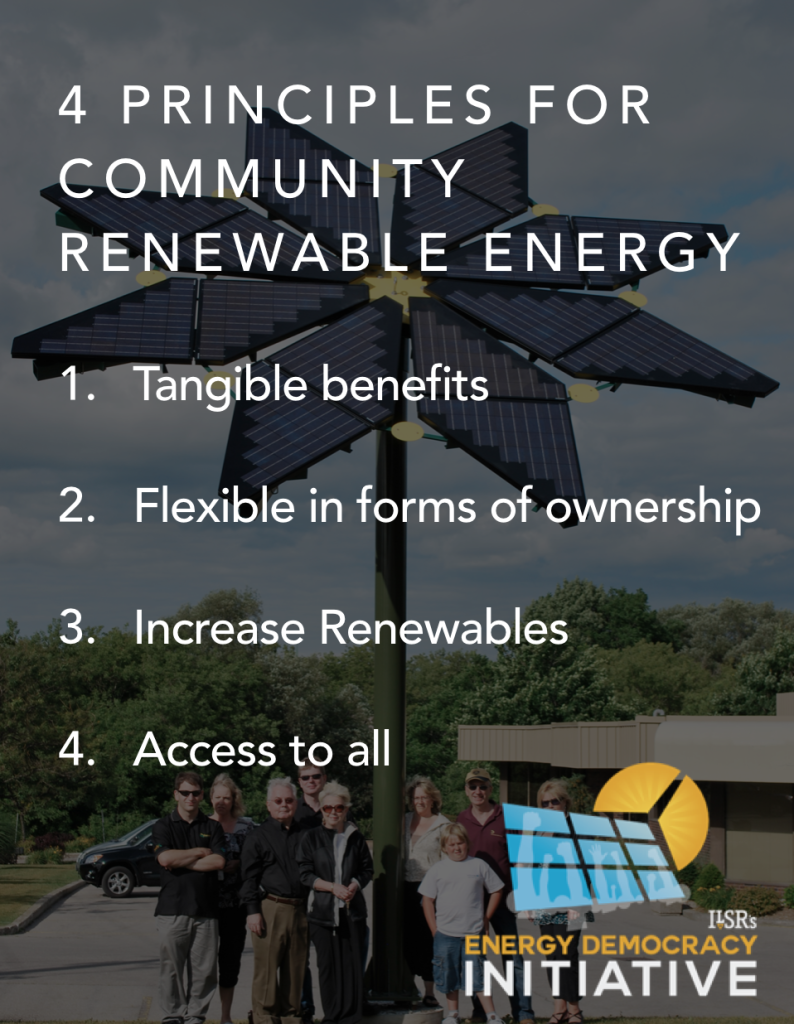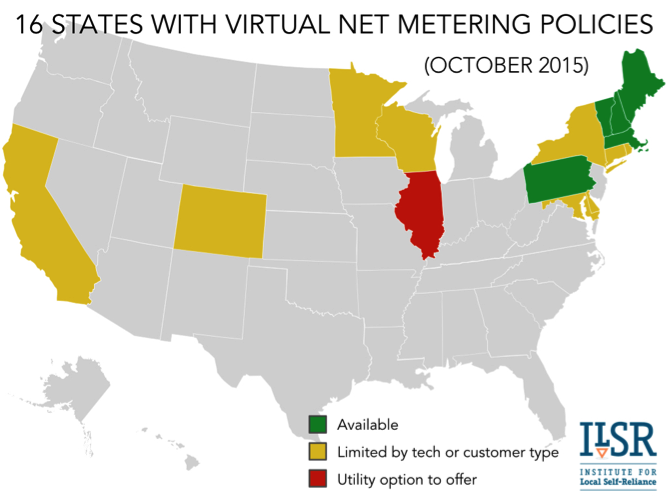Maryland Scores 3 Out Of 4 On Principles For A Good Community Solar Program
Originally published on ilsr.org.
![]() Maryland is the latest state to adopt a community solar program, and a review of the program rules shows that the state is serious about getting community solar right. It meets at least 3 of the 4 principles for a good program from our Beyond Sharing report on community renewable energy.
Maryland is the latest state to adopt a community solar program, and a review of the program rules shows that the state is serious about getting community solar right. It meets at least 3 of the 4 principles for a good program from our Beyond Sharing report on community renewable energy.
 A Pretty Big “Pilot”
A Pretty Big “Pilot”
Although described as a pilot program, the Maryland community solar program will allow enough capacity to serve up to 1.5% of peak demand through the three-year program. Of an approximately 14,000-megawatt peak, that allows for about 210 megawatts of community solar projects.
The Maryland program capacity is divided into three buckets:
- Small (30%): including projects 500 kilowatts and smaller, or placed on brownfield or existing structures
- Open (40%): any project up to 2 megawatts in size
- Low- and Moderate-income (30%): any project up to the 2-megawatt limit serving 30% or more low-to-moderate income participants, and at least 10% low-income participants
Reasonable Compensation
Customers will receive net metering credits for participation for 25 years, rolling over monthly until March (allowing the previous summer’s credits to be absorbed fully over the winter months). Even folks with existing rooftop solar arrays can participate, as long as the net production of their on-site and community solar arrays doesn’t exceed 200% of their annual consumption.
Excess credits (those left over at the end of March) will not be paid at the retail rate, but will vary based on whether the customer exercises retail choice. For customers on the default rate plan, their per-kilowatt-hour credit will be “reasonably adjusted to exclude the distribution, transmission, and non-commodity portion of the customer’s bill.”
A Missed Opportunity for Greater Participation
The program caps each project at 350 subscribers, which equates to an average subscription size of 5.7 kW for a 2-megawatt project with the maximum subscribers, and 1.4 kW for a 500 kW project. Many other community solar programs allow subscriptions as small as a single panel, closer to 300 watts, improving affordability. The regulations also allow utilities to set a minimum subscription size of 2 kW, which seems unnecessarily high.
 Chip in a few dollars a month to help support independent cleantech coverage that helps to accelerate the cleantech revolution!
Chip in a few dollars a month to help support independent cleantech coverage that helps to accelerate the cleantech revolution!
A Public Queue and No Co-Location
A couple Maryland rules seem to directly address issues in Minnesota’s community solar program. Most notably, the queue of projects is posted publicly and updated daily. Additionally, the utility is required to “make reasonable attempts” to help applicants find good capacity spots that minimize adverse effects and maximize grid benefits. Developers in Minnesota have accused Xcel Energy of making it difficult to identify low-cost interconnection locations.
Additionally, the Maryland rules expressly prohibit co-location, a practice of using common siting for multiple community solar projects in order to lower development costs. In Minnesota, Xcel Energy accused solar developers of using co-location to circumvent the 1 megawatt project size cap, while developers insisted it was a method of keeping development costs low. There is an interesting exception, however, for brownfields or rooftops, perhaps recognizing the benefits of infill development.
The One Missing Piece (and not just in Maryland)
Although Maryland should be applauded for rules requiring participation by low- and moderate-income participants, there’s a notable lack of specificity about how. It’s not the only state that’s struggled with figuring out how to make community solar accessible.
In Colorado, for example, a carve-out of 5% of program capacity has transformed into a charitable program, with developers simply giving away capacity to low-income subscribers. In New York, Phase 1 of their “Community Distributed Generation” program, targeting low-income participation, wrapped up in May, but no results are in as of yet. GRID Alternatives, a Colorado-based nonprofit organization, has constructed a number of solar arrays serving low-income communities, but usually through public or philanthropic grants, and not as part of a replicable program.
A potential solution, on the agenda in Minnesota, is requiring utilities to offer on-bill repayment. This is already common practice among many utility-sponsored community solar programs, but they key to universal access is removing the credit score screen (an immediate cut-off for nearly half of Americans, and a disproportionate number of low-income ones). Instead, program data suggests that default rates are similar when utilities use alternative criteria such as on-time utility bill payment history, and yet allow much greater participation.
For more on low-income access to solar and community solar, you can read:
- The Low-Income Solar Policy Guide
- Bringing Community Solar to a Larger Community
- Community Power Network’s Low Income Solar resources
For more about community solar programs across the country, you can see our post on virtual net metering and the map below:
Maryland’s community solar pilot is a great start, and we hope it’s an indication of the direction for future programs.
For timely updates, follow John Farrell on Twitter or get the Energy Democracy weekly update.
Have a tip for CleanTechnica? Want to advertise? Want to suggest a guest for our CleanTech Talk podcast? Contact us here.
Latest CleanTechnica.TV Video

CleanTechnica uses affiliate links. See our policy here.

